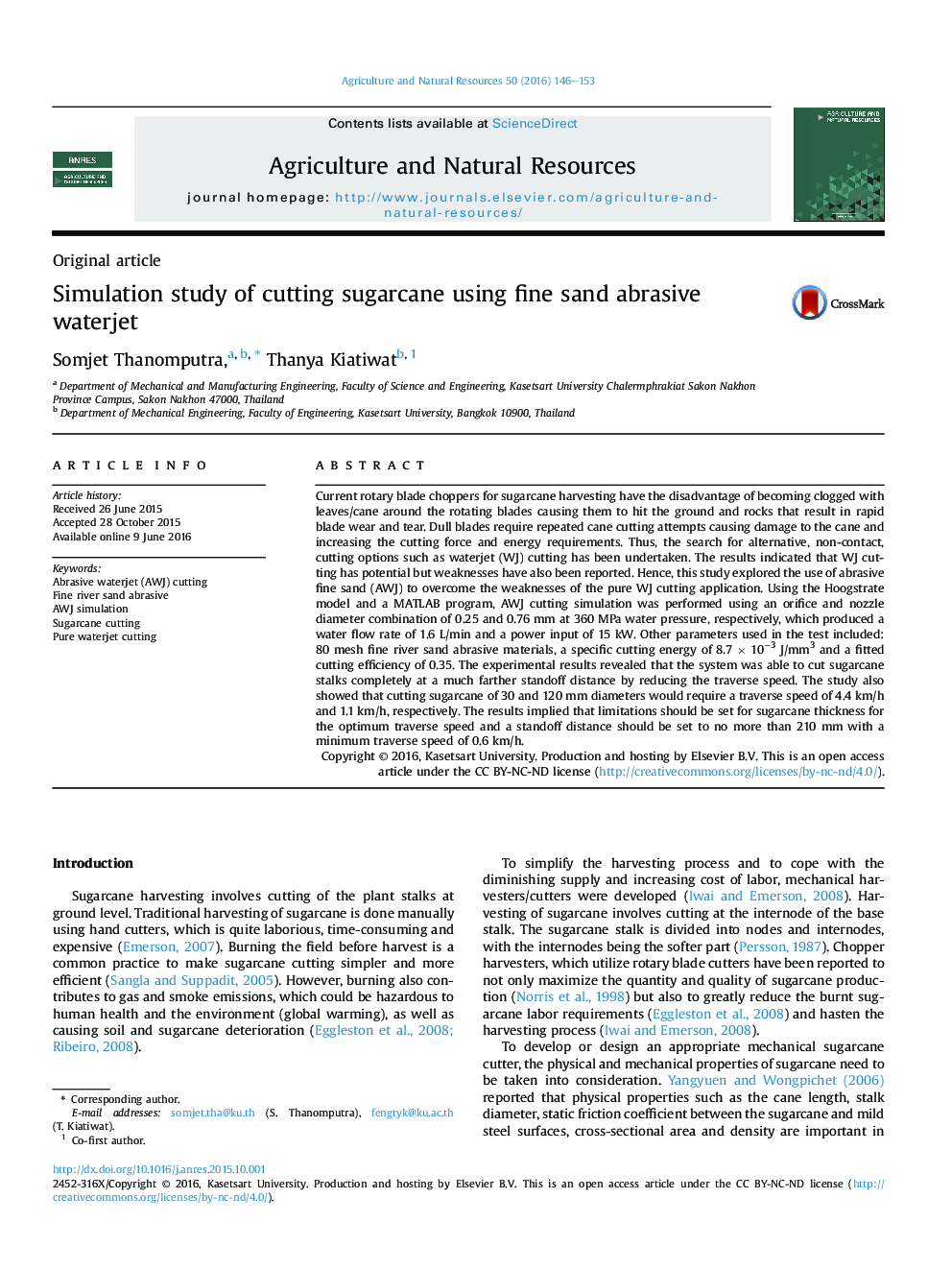| کد مقاله | کد نشریه | سال انتشار | مقاله انگلیسی | نسخه تمام متن |
|---|---|---|---|---|
| 83089 | 1421016 | 2016 | 8 صفحه PDF | دانلود رایگان |
Current rotary blade choppers for sugarcane harvesting have the disadvantage of becoming clogged with leaves/cane around the rotating blades causing them to hit the ground and rocks that result in rapid blade wear and tear. Dull blades require repeated cane cutting attempts causing damage to the cane and increasing the cutting force and energy requirements. Thus, the search for alternative, non-contact, cutting options such as waterjet (WJ) cutting has been undertaken. The results indicated that WJ cutting has potential but weaknesses have also been reported. Hence, this study explored the use of abrasive fine sand (AWJ) to overcome the weaknesses of the pure WJ cutting application. Using the Hoogstrate model and a MATLAB program, AWJ cutting simulation was performed using an orifice and nozzle diameter combination of 0.25 and 0.76 mm at 360 MPa water pressure, respectively, which produced a water flow rate of 1.6 L/min and a power input of 15 kW. Other parameters used in the test included: 80 mesh fine river sand abrasive materials, a specific cutting energy of 8.7 × 10−3 J/mm3 and a fitted cutting efficiency of 0.35. The experimental results revealed that the system was able to cut sugarcane stalks completely at a much farther standoff distance by reducing the traverse speed. The study also showed that cutting sugarcane of 30 and 120 mm diameters would require a traverse speed of 4.4 km/h and 1.1 km/h, respectively. The results implied that limitations should be set for sugarcane thickness for the optimum traverse speed and a standoff distance should be set to no more than 210 mm with a minimum traverse speed of 0.6 km/h.
Journal: Agriculture and Natural Resources - Volume 50, Issue 2, March 2016, Pages 146–153
